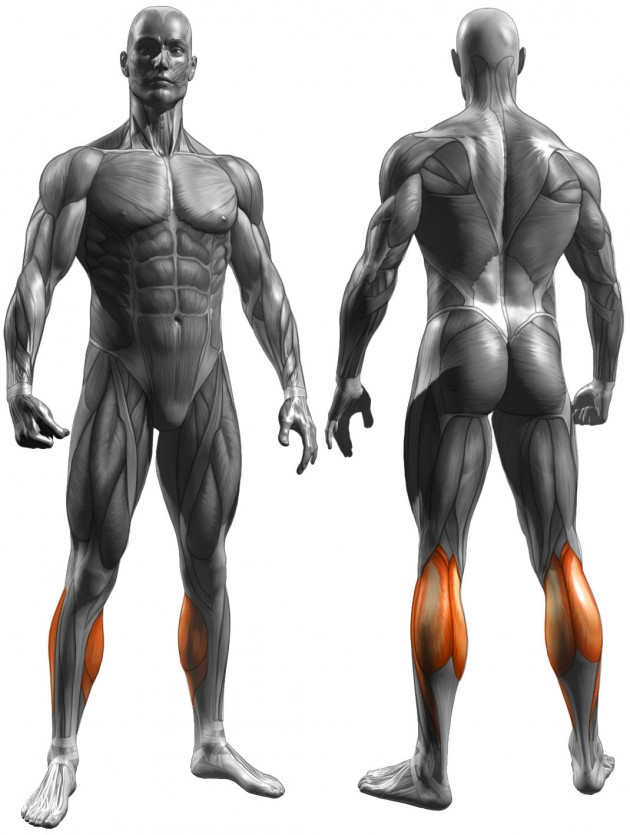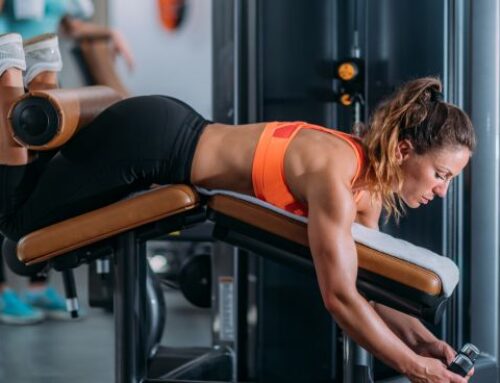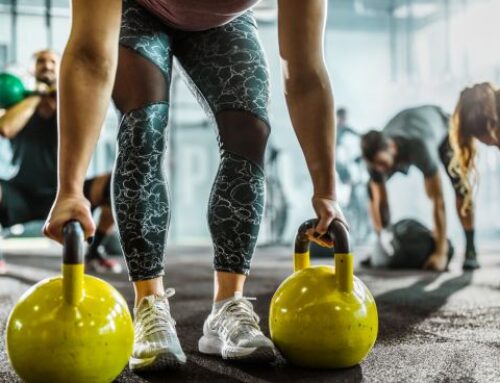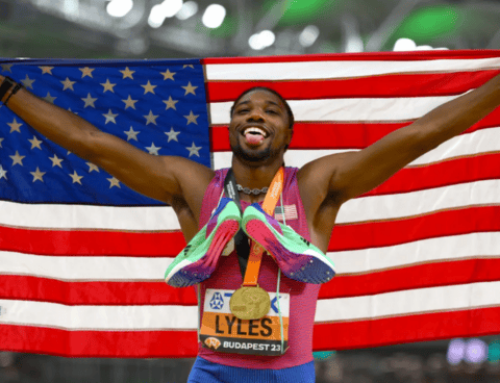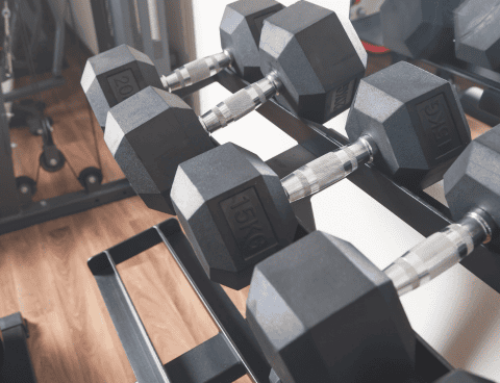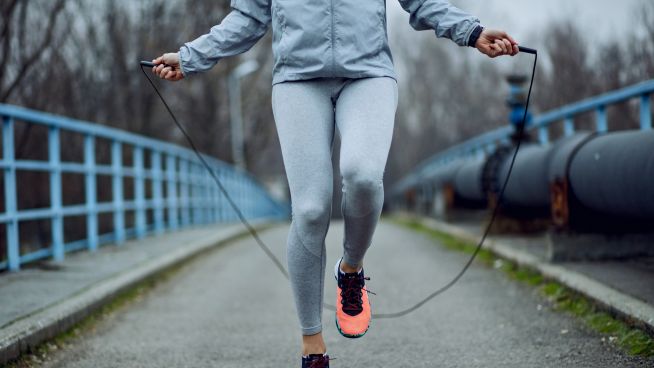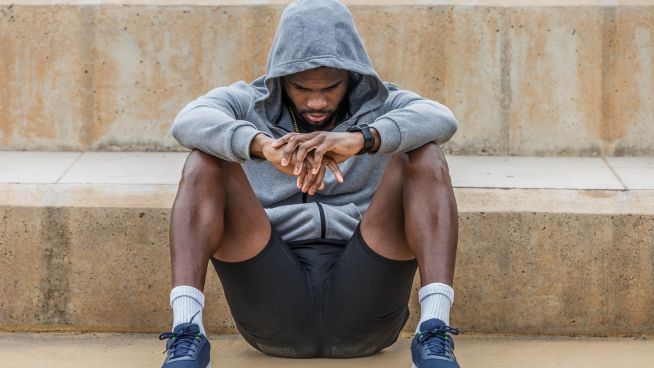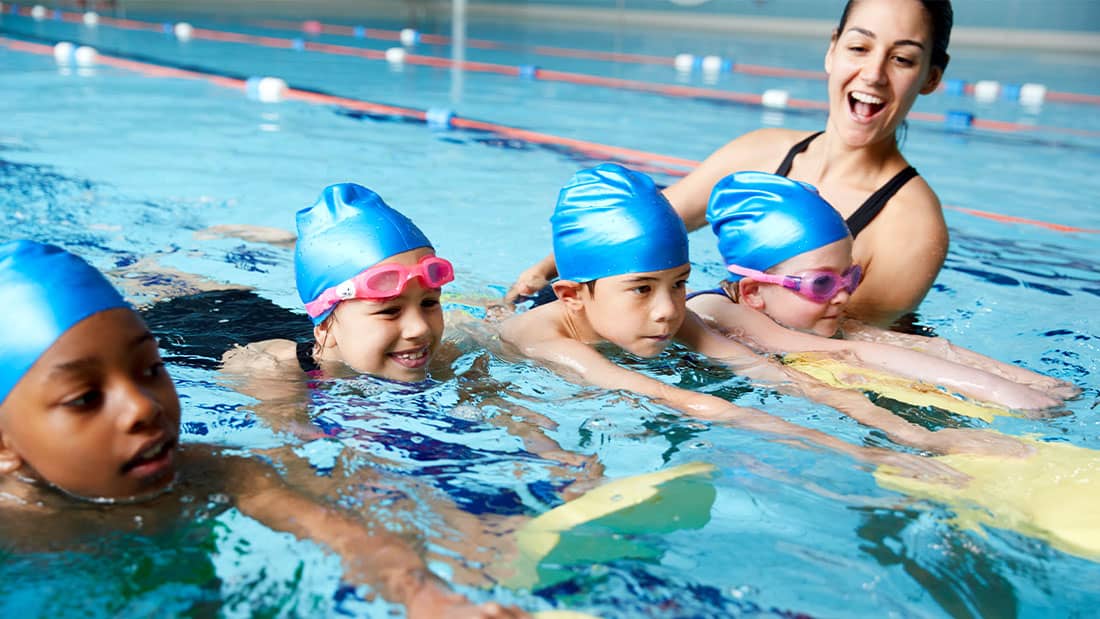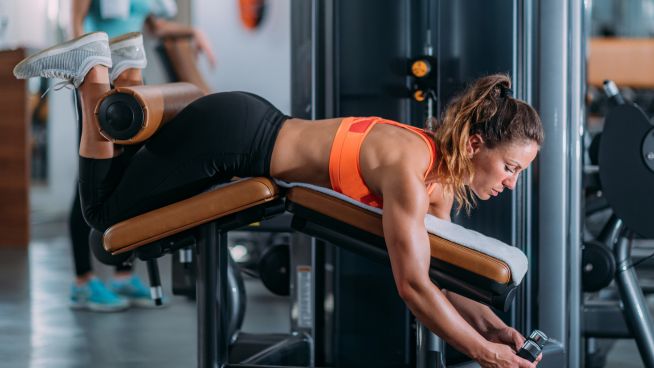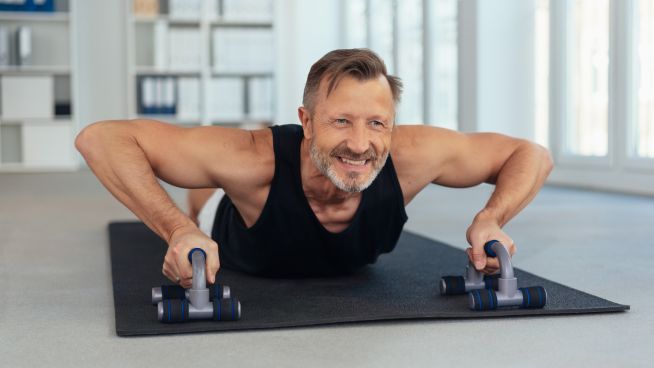How to Train Your Calf Muscles
In order to build any muscle in the body, for example the calf muscle, a few things must be accounted for. You need to understand the anatomy of the body part; set goals and determine the training style needed to achieve them; and take note of the equipment available to you. When all of these areas are checked off, you will be able to fully and thoroughly train your muscles. (See also How to Build Leg Muscle.)
The Anatomy of the Calf
The calf has many flexors and extensors, but its main muscles are the soleus, the long, thin muscle running from the knee to the ankle; and the gastrocnemius, a diamond-shaped muscle located in front of soleus, near the knee. Both are located in the back of the calf, and the best way to build them up is by performing Calf Raises.
The soleus is activated whether you are sitting or standing, but the gastrocnemius is activated only when you stand. The American College of Sports Science (ACSM) suggests Standing Calf Raises or Donkey Calf Raises to simultaneously work both.
Another essential calf muscle is the anterior tibialis, located in front. It’s used only during ankle dorsiflexion, so Toe Raises are the best exercise for it.
Goals and Training Style
To develop your muscles to meet your goals, you must train accordingly. For instance, if you want bigger, stronger calf muscles, the National Strength and Conditioning Association (NSCA) suggests lifting heavy weights (2-3 sets of 7-10 reps) with good form. On the flip side, endurance athletes require more durable muscles, so they should use lower weight and higher reps. For general sports functional movements, combine the two with balance training.
Equipment
Scope out what machines are available at your gym. Both seated and standing calf raise machines are great to use, along with toe raises. If these machines are not available, use dumbbells or another source of heavy weight, and mimic the movements. Equipment should not be a limiting factor when training any body part. Just be creative, and always remember to use good form.
Whether you’re training for strength or explosive power, the eccentric phase of your movements should be slower than the concentric phase. With Calf Raises, for example, the up motion, when you can see the muscles contract, is the concentric phase. When you lower, you are in the eccentric phase. This is when your muscles are most vulnerable.
Be sure to maintain control. However long it takes to lift the weight on the upward motion, slow it down and take more time coming back down in the eccentric phase. If you follow this advice, you will find success in building your calf muscles.
RECOMMENDED FOR YOU
MOST POPULAR
How to Train Your Calf Muscles
In order to build any muscle in the body, for example the calf muscle, a few things must be accounted for. You need to understand the anatomy of the body part; set goals and determine the training style needed to achieve them; and take note of the equipment available to you. When all of these areas are checked off, you will be able to fully and thoroughly train your muscles. (See also How to Build Leg Muscle.)
The Anatomy of the Calf
The calf has many flexors and extensors, but its main muscles are the soleus, the long, thin muscle running from the knee to the ankle; and the gastrocnemius, a diamond-shaped muscle located in front of soleus, near the knee. Both are located in the back of the calf, and the best way to build them up is by performing Calf Raises.
The soleus is activated whether you are sitting or standing, but the gastrocnemius is activated only when you stand. The American College of Sports Science (ACSM) suggests Standing Calf Raises or Donkey Calf Raises to simultaneously work both.
Another essential calf muscle is the anterior tibialis, located in front. It’s used only during ankle dorsiflexion, so Toe Raises are the best exercise for it.
Goals and Training Style
To develop your muscles to meet your goals, you must train accordingly. For instance, if you want bigger, stronger calf muscles, the National Strength and Conditioning Association (NSCA) suggests lifting heavy weights (2-3 sets of 7-10 reps) with good form. On the flip side, endurance athletes require more durable muscles, so they should use lower weight and higher reps. For general sports functional movements, combine the two with balance training.
Equipment
Scope out what machines are available at your gym. Both seated and standing calf raise machines are great to use, along with toe raises. If these machines are not available, use dumbbells or another source of heavy weight, and mimic the movements. Equipment should not be a limiting factor when training any body part. Just be creative, and always remember to use good form.
Whether you’re training for strength or explosive power, the eccentric phase of your movements should be slower than the concentric phase. With Calf Raises, for example, the up motion, when you can see the muscles contract, is the concentric phase. When you lower, you are in the eccentric phase. This is when your muscles are most vulnerable.
Be sure to maintain control. However long it takes to lift the weight on the upward motion, slow it down and take more time coming back down in the eccentric phase. If you follow this advice, you will find success in building your calf muscles.

